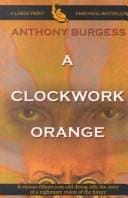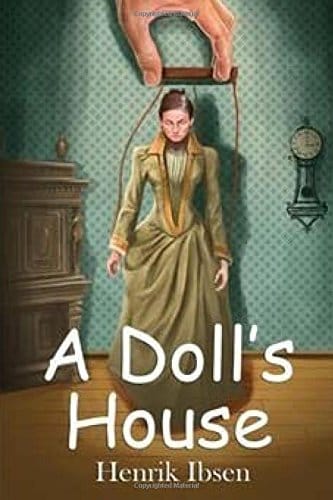A Clockwork Orange: An In-Depth Analysis of Anthony Burgess’s Dystopian Classic

Introduction to A Clockwork Orange
Anthony Burgess’s 1962 novel A Clockwork Orange remains one of the most provocative works in 20th-century literature. Immortalized by Stanley Kubrick’s 1971 film adaptation, the story of teenage delinquent Alex and his violent droogs continues to captivate readers, scholars, and pop-culture enthusiasts alike. This SEO-friendly guide explores the novel’s plot, themes, language, and cultural impact, providing an authoritative resource for anyone researching A Clockwork Orange.
Plot Overview
A Clockwork Orange is set in a near-future British dystopia plagued by rampant youth crime. Narrator Alex DeLarge, only fifteen, leads a gang that revels in "ultraviolence," theft, and sexual assault. After a botched robbery ends in murder, Alex is betrayed by his friends and sentenced to prison. Seeking early release, he volunteers for the State’s experimental Ludovico Technique, a form of aversion therapy that conditions him to become violently ill at the mere thought of wrongdoing. Though he is returned to society as a “reformed” citizen, the procedure robs him of free will, leaving him defenseless and suicidal until a final, ambiguous chapter hints at genuine moral growth.
Themes and Symbolism
Free Will vs. Control
The central question in A Clockwork Orange is whether morality can exist without freedom of choice. By transforming Alex into a harmless yet mechanistic being—an eponymous "clockwork orange"—the State creates a paradox: he is good by compulsion, not by conviction. Burgess argues that genuine virtue is impossible without the ability to choose evil.
The Corruption of Authority
Government officials, prison chaplains, and psychologists all seek to manipulate Alex for personal or political gain. Their self-serving actions suggest that institutional power can be as brutal and immoral as the violence it seeks to suppress. The novel exposes the thin line between a criminal’s cruelty and that of a supposedly civilized society.
Youth Culture and Rebellion
Alex’s stylized vernacular, love of classical music, and signature fashion (bowler hat, white overalls, and cane) symbolize a subculture desperate for identity and agency. Burgess paints youth rebellion as both a destructive force and a symptom of societal failure to offer meaningful alternatives.
Language and Style: Nadsat Explained
One of the novel’s most distinctive features is Nadsat, a fictional slang blending Russian, English, Cockney, and invented words. Examples include “droog” (friend), “veck” (man), and “horrorshow” (good). This linguistic experiment immerses readers in Alex’s worldview, softening the shock of violence while forcing active engagement with the text. Burgess, a trained linguist, used Nadsat to delay moral judgment, compelling readers to reflect on their own desensitization to brutality.
Stanley Kubrick’s Film Adaptation
Stanley Kubrick’s 1971 film catapulted A Clockwork Orange into global controversy and acclaim. Malcolm McDowell’s charismatic performance humanized Alex, while Kubrick’s striking visual style amplified the story’s themes. Notably, the film omits the novel’s final chapter (included only in the UK first edition), ending on a bleaker note that underscores the cyclical nature of violence. The movie’s explicit content sparked censorship debates and was temporarily withdrawn from UK distribution by Kubrick himself, demonstrating the enduring power of Burgess’s narrative.
Cultural Impact and Legacy
From fashion to music, A Clockwork Orange has permeated popular culture. The iconic imagery of Alex’s false eyelashes and bowler hat appears in everything from rock concerts to Halloween costumes. Musicians like David Bowie and bands such as Blur have referenced the novel, while scholars employ it in discussions of behavioral psychology, criminology, and ethics. The term “clockwork orange” has entered everyday language as shorthand for any entity that appears organic on the outside but is mechanically controlled within.
Why A Clockwork Orange Endures
Six decades after publication, the novel’s exploration of free will, state power, and moral responsibility remains startlingly relevant. In an era of mass surveillance, algorithmic nudging, and debates over criminal rehabilitation, Burgess’s cautionary tale warns against technological and bureaucratic overreach. Additionally, the visceral immediacy of Alex’s narrative voice ensures that new generations continually rediscover the book, drawn in by its linguistic creativity and ethical complexity.
Reading Tips for First-Time Readers
For readers daunted by Nadsat, consider consulting the glossary in later editions, but try to infer meanings contextually for a more immersive experience. Pay close attention to musical references—Alex’s love of Beethoven reveals a multidimensional character whose aesthetic sensibilities clash with his brutality. Finally, remember that the final, seldom-filmed chapter changes the story’s moral arc, presenting Alex’s potential maturation and underscoring Burgess’s ultimate faith in human choice.
Conclusion
A Clockwork Orange is far more than a shocking tale of juvenile delinquency; it is a sophisticated meditation on autonomy, morality, and the role of the state. Anthony Burgess challenges readers to examine whether a society that eliminates choice in the name of order can still call itself humane. Whether encountered on the page or screen, the story’s linguistic daring, thematic depth, and cultural resonance ensure its place as a timeless classic — and a perpetual touchstone in debates about freedom and control.
